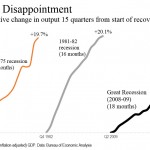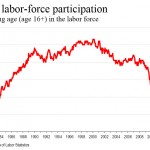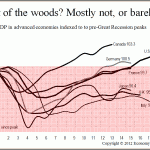
How anemic has been the recovery from the Great Recession? Here’s one way of looking at it. Until the Great Recession (December 2007-June 2009), the lengthiest recessions of the post-World War II era were 1973-1975 and 1981-1982, both at 16 months. The Business Cycle Dating Committee of the National Bureau [continue reading . . . ]



